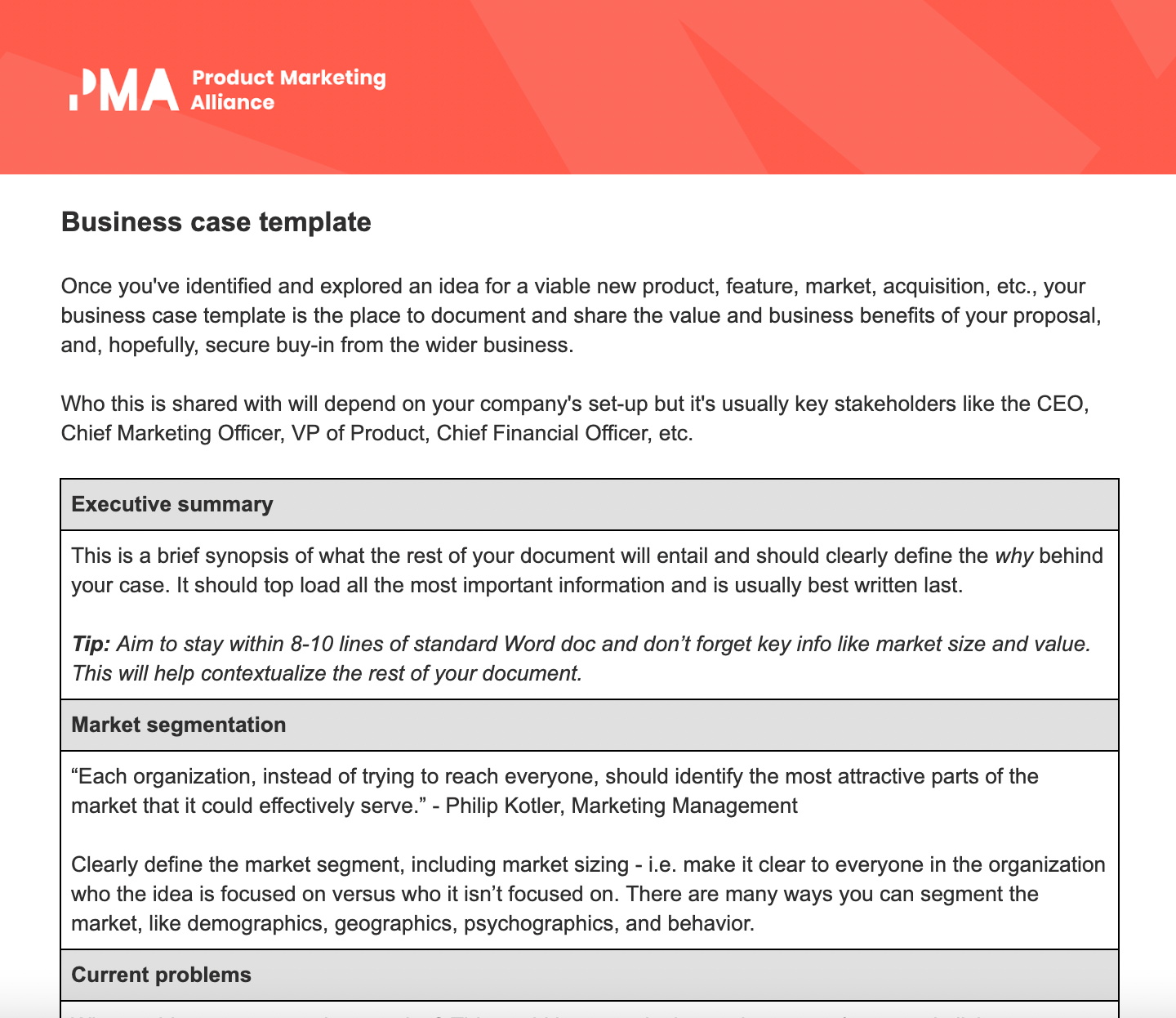What is a business case template?
A business case template is a downloadable document designed to provide a clear and concise justification for a proposed business initiative. To use it, all you need to do is download your copy and fill in each section. Simple!
A strong business case will outline the rationale behind the idea, the benefits it will bring, the resources required, and the financial implications for the organization. Our template is an invaluable resource for anyone presenting a proposal to key stakeholders (such as the CEO, CMO, VP of Product, and CFO) ensuring they understand the value and necessity of the project.
In other words, it's the first step toward getting the backing you need!
Why is a business case template useful for marketers?
- Structured clarity: It provides a systematic approach to presenting your ideas, ensuring all critical aspects are covered.
- Strategic alignment: Helps align your proposal with the organization’s strategic goals, making it easier to gain executive buy-in.
- Informed decision-making: Offers a comprehensive view of the potential impact, enabling stakeholders to make informed decisions.
- Resource management: Clearly outlines resource requirements, helping in efficient planning and allocation.
- Risk mitigation: Identifies potential risks and provides strategies to mitigate them, demonstrating thorough preparation.
How to use our business case template
Creating a business case for the first time can be daunting. That's why we've created a template you replicate. Once you've downloaded your copy below, simply follow these 10 steps to create your own winning business case.
- Executive summary: Start with a brief synopsis of your proposal. Highlight the most crucial points and ensure it clearly defines the 'why' behind your case. Write this section last for maximum clarity and impact.Tip: Keep it concise, around 8-10 lines, and include key information like market size and value.
- Market segmentation: Define the market segment you’re targeting. Explain the market size and characteristics, and specify who your idea is for and who it isn't.
- Current problems: Outline the problems your proposal aims to solve. Provide evidence from customer interviews, support tickets, or market research to validate these issues. Tip: Use 3-4 bullet points to explain the problems and how you identified them.
- Opportunities on offer: Describe the benefits your solution will bring, such as increased market share, revenue, or customer loyalty. Tie these benefits to organizational goals and support them with data. Tip: Lead with the benefit and back it up with proof.
- Competitive summary: Analyze market trends, competitors, and potential opportunities and threats using frameworks like PESTEL.
- Finances: Detail the revenue model and provide a comprehensive cost breakdown. Include charts or graphs for better readability. Tip: Ensure costs are precise and validated by relevant departments.
- Resource requirements: Identify the internal and external teams needed, their roles, and the duration of their involvement. Validate your resource estimates with the concerned departments.
- Timelines: Present a high-level timeline for your project, including key stages and internal approvals needed. Keep it concise and realistic. Tip: Validate your timelines with relevant stakeholders to ensure feasibility.
- Risk Assessment: Highlight potential risks, their impacts, and your mitigation strategies. Be honest and transparent to build trust with stakeholders. Tip: Openly discuss risks to demonstrate thorough planning and preparedness.
- The alternatives: Provide a brief comparison of alternative options to achieve the same outcome. Evaluate each based on benefits, costs, feasibility, and risks, and rank them accordingly.
Download your business case template







.png)
.png)












 Follow us on LinkedIn
Follow us on LinkedIn 

.svg?v=a55345d682)